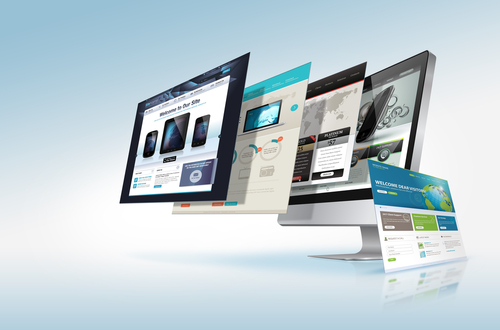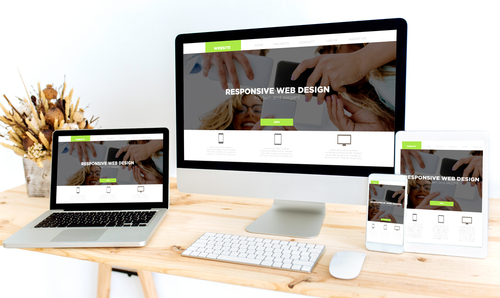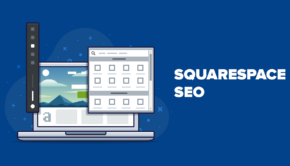Web Design Website Sites: Factors That Can Influence Your Online Success
In this digital world, every company owner should know the saying “If your business is not online, then your business will be out of business.” Your website is the first doorway in which potential customers can reach you. Ensure that you make a great first impression so they won’t click that close button in a heartbeat.
If you’re planning to create your own brand’s site, here are some factors that you need to keep in mind:
1. SEO
Search engine optimization is essential in every website. Your ranking in search engine results pages highly affects how much traffic your site gets on average. If you’re not familiar with SEO, you can hire people who know how to do it such as Tulsa website design and web design company Hyderabad.
Proper optimization helps in organically ranking your website. Being advertised on top of results pages will cost you extra money. Organic ranking means when people use specific keywords, your website is easily visible to them. You’re on the first page which increases the number of visitors on your site.
Here are some of the ways to optimize your website:
- An optimized website also means that you have created a web design and used a layout that doesn’t frustrate your customers. When things are complicated people usually turn away and look for the easy stuff that they can handle so, try to avoid making things difficult for them.
- Your website should be easy to navigate. Simple layouts will make navigation a breeze for your customers. This way they get to stick around for a lot longer, getting redirected to pages where you want them to go, which could lead to conversions or sales.
- The overall design of your website should also be simple. The images, colors, font choices should not be exaggerated. Keep it simple. Don’t bombard your site with clashing images, loud colors, and ugly fonts. The simple it looks, the easier it is on the viewers’ eyes.

2. Target Market
In every business, your primary concern should be your customers. It’s crucial to determine who your target market is. You can’t just assume that a wide range of random people can be your customers. You have to identify specific characteristics of your potential customers so you can tailor your marketing strategies and your website for them.
Study the demographics of your customers to see which groups of people are your usual visitors. Factors such as location, age, gender, etc. can give you insights on your customers. If you know who your customers are, you’ll know how to capture their attention.
Different people respond differently on website design. If your target market is the older generation, maybe those on their 40s or higher, it’s a good chance that they are not very tech-savvy. Create a website that is easy to navigate for them. Don’t make purchasing online complicated for them or else they will get frustrated and leave.
On the other hand, if you target the young generation, millennials or Gen Zs, an interactive website might draw them in. You could fill your website with lots of graphics or images bursting with color. It makes the user experience more immersive which would appeal to more tech-savvy individuals.
3. Content
Images, fonts, logos, and colors, are not the only things that determine the success of your website design. Your content should not only be well-formatted in your site but should also present useful information for the reader.
Your website should have quality content that is beneficial for your customers. It is one of the reasons why it’s essential to determine your target market. You can spin your content according to the needs of your customers. It helps build their trust in your company because they get high-quality and well-researched information.
Create evergreen content. These are content that is relevant for a long time. It’s not seasonal. It’s relevant whole-year round and is applicable for years to come. On the other hand, it’s also essential to produce seasonal content. It helps to increase more traffic at certain times of the year because it’s “in the season.”
The text should be easily readable. Use simple words that won’t confuse your readers. It helps them read through the text without needing to look up every unfamiliar word in the dictionary. It will also lessen the chances of them closing the page because they can’t understand a word you’re saying.

4. Updated Website Settings and Plugins
It only takes a few seconds before a person exits a website. The reason may be because they accidentally clicked on it without meaning to or it’s loading speed is too slow. Either of the two is terrible but the second one is something you can avoid from happening.
A. Website Responsiveness
A lot of people use their mobile phones to search online. It’s handy, and smartphones are something they bring everywhere with them. If your website is responsive, you make your site and all of its content readily available for mobile users.
B. Adaptive
Your website should also be adaptive to screen sizes. While most people use their smartphones, there are still people who use their PCs and tablets. Responsive websites format its content to the screen where it’s viewed, which eliminates the need for zooming in and out constantly.
C. Includes Progressive Web Apps
Animations, push notifications, and splash screens are examples of progressive web apps. These are web design elements that upgrades the user-experience making your website more immersive. It also makes your website look like it’s up to date with the latest improvements in technology.
Conclusion
Remember that first impressions matter. Your web design can either attract or turn away the viewer. You should take the time to plan out what your site will look like. It’s your one chance to impress your visitors so they stay longer on your site, which can then help your business successfully grow.







![Apple iOS 10: Features, Release Date [Infographic]](https://technofaq.org/wp-content/uploads/2016/09/ios-10-infographic-150x150.jpg)







